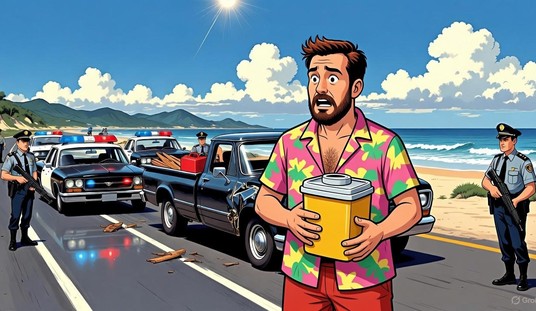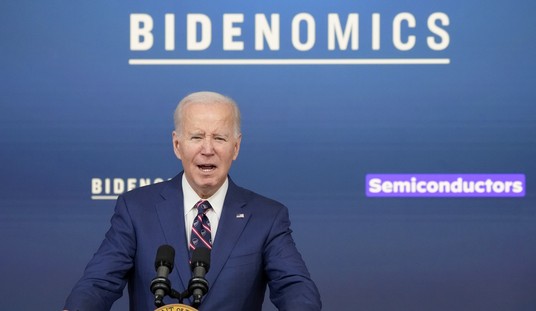These days, there is nothing old civil rights activists like to do better than hold reunions, where like World War II veterans, they trade war stories, recall the “good fight,” and praise themselves for leading the struggle which eventually led to the election of America’s first African-America President.
It should be no surprise then to find SNCC (the Student Nonviolent Coordinating Committee) activists “now averaging 65 years of age” engaging at such nostalgia at their recent reunion in Raleigh, North Carolina. According to the lengthy report filed in The Nation by the 1960s radical leader and SDS founder Tom Hayden, they sought to pass “the torch to a new generation fighting for a constitutional right to quality education.”
The keynote speech was given by Attorney General Eric Holder, who spoke at the same site where SNCC began as a coordinating group for the growing sit-in movement exemplified by the famous Woolworth counter sit-in, where a few black students demanded to be served. Their calm demeanor and steadfastness exposed the nation to the reality of segregation. Holder, as Hayden could not refrain from noting, is now “under fire from the right” for trying to rebuild “the Justice Department’s civil rights division.” As for Obama, Holder told the SNCC veterans, “There is a straight line from those lunch counter sit-ins to the Oval Office today.”
The purpose of the event was not simply to reminisce, but to “rekindle the spirit of 1960 and build on SNCC’s achievements,” Holder added. “There is still marching to be done.” (On this issue, I will soon write on Abigail Thernstrom’s new book, Voting Rights — and Wrongs, in which she shows how far removed we are from the issues of that era.)
Undoubtedly, SNCC at the start played a major and courageous role in registering black voters in the South, as well as participating in sit-ins and the Freedom Rides, at which now Congressmen John Lewis was savagely beaten in Montgomery, Alabama, in 1961. The problem with glorifying SNCC’s entire history, however, is that the organization departed from its early position of working to establish what they called a “beloved community” based on non-violence and interracial harmony, a goal they shared with Martin Luther King, Jr., and adopted the Nation of Islam’s brand of black nationalism, separatism, and the advocacy of violence to achieve its stated ends — or as Malcolm X famously argued, “by any means necessary.”
Hayden acknowledges the problem, quoting a historian named Peniel Joseph, who spoke at the conference. Hayden writes:
SNCC became “a blip in the dominant [civil rights] narrative,” according to 37-year-old Tufts historian Peniel Joseph, who attended the conference. Historicizing SNCC is extremely important, he said, though there is a danger that “glorifying” the early SNCC implies that a “bad SNCC” developed after 1966 with the rise of Black Power, calls for self-defense and revolutionary internationalism. Those apparent extremes should not be discredited, Joseph said, but contextualized in the failed social response of the US government; the escalation of the Vietnam War at the same time as the Selma, Alabama, march; and the employment of counterintelligence programs by the FBI. (Emphasis in bold, mine.)
Joseph’s logic should be familiar. It is the same argument once used by Stalinists to justify the terror of the Soviet regime under Stalin. As they said, “American encirclement of the Soviet Union, meant to destroy socialism, forced the Bolsheviks to take harsh actions in response to the West’s opposition and counter-revolutionary policies.” It is the logic of Bill Ayers in his memoir on the Weather Underground, when he argues that their militancy and bombings were a response to the evil and bombings of the United States, whose policies drove them to take extreme action. This form of putting things into context can be used to explain and justify almost anything.
The conference chose only to celebrate “SNCC’s overall role in defeating segregation and winning voting rights,” and made “no effort at dividing ‘good’ from ‘bad’ SNCC’s, to distance the organization from its more radical phases.” Despite Hayden, the fact is is that there were two SNCC’s, and the second one was indeed not only bad, but very bad. One can find out the entire story in reading the very sympathetic but thorough history of the organization written by Clayborne Carson in 1981, In Struggle: SNCC and the Black Awakening of the 1960s. He describes the major shift the organization underwent when its leader John Lewis was forced out and replaced by the militant Stokely Carmichael (later Kwame Toure). As Carson writes, despite assurances that SNCC’s goal was the same one of ridding America of racism, “the contrast between Lewis’ moderation and Carmichael’s outspoken militancy was obvious to observers.”
What motivated SNCC activists, Carson shows, was that the slogan of black power “aroused blacks and disturbed whites,” and was meant to “stir racial emotions.” Eventually, Carson says, Carmichael and SNCC “moved ever closer to an ideology of black separatism.” And, a bit later, it joined the anti-Vietnam War movement and sided with the radicals in that effort, seeing the war as part of American imperialism’s thrust. SNCC also tried to move American blacks to adopt hatred of Israel as a major part of its anti-colonialist program, and became one of the first black organizations to support Yassir Arafat’s PLO, as Fatah was then called.
Carmichael’s analysis was made clear in the following excerpt from a speech he gave on June 15, 1966:
The advocates of Black Power reject the old slogans and meaningless rhetoric of previous years in the civil rights struggle. The language of yesterday is indeed irrelevant: progress, non-violence, integration, fear of “white backlash,” … One of the tragedies of the struggle against racism is that up to this point there has been no national organization which could speak to the growing militancy of young black people in the urban ghettos and the black-belt South. There has been only a “civil rights” movement, whose tone of voice was adapted to an audience of middle-class whites. … We had only the old language of love and suffering. And in most places — that is, from the liberals and middle class — we got back the old language of patience and progress. … There is no black man in the country who can live “simply as a man.” His blackness is an ever-present fact of this racist society, whether he recognizes it or not…. “Integration” as a goal today speaks to the problem of blackness not only in an unrealistic way but also in a despicable way…. “integration” is a subterfuge for the maintenance of white supremacy.
And before his death from cancer in November of 1998, Carmichael, by then called by the African name Kwame Toure, said the following as he reflected back on his life and prepared to take an illegal solidarity trip to Libya:
In the 1960s, we said “Hell No, we won’t go” to Vietnam, to fight against a people who never called us a nigger, and we didn’t go. We said that they would defeat U.S. imperialism, and the heroic Vietnamese People, under the sterling example and leadership of the eternal Ho Chi Minh, did. Today we say “Hell yes, we are going to Libya” … and we warn the U.S. government not to interfere. We are certain today that the people of Cuba and Libya, under the steadfast leadership of Fidel Castro and [Libyan President] Muammar Qadhafi, will be victorious.
By then, Toure had come to support Louis Farrakhan’s Nation of Islam. Learning that he had advanced and irreversible prostate cancer, he told the press that it was “an FBI induced cancer,” the result of the never ending attempt of the US government to assassinate him and part of “the white man’s arsenal of chemical and biological warfare.” Maybe it was fortunate for their reunion that Carmichael is no longer with us, for his presence would have made their attempt to transcend “old antagonisms” and hide the truly extremist direction to which SNCC had moved impossible.
Nevertheless, Bob Moses told the meeting that SNCC’s work was not yet done. Black people were “second-class constitutional people,” he said, who will only leave that position if there is a constitutional amendment guaranteeing them a right to a quality education.
One could ask, “Don’t all Americans deserve a quality education?” — and would a constitutional amendment really bring it about? At least his chimerical demand is less absurd than demanding the U.S. government award reparations to all the black people in America for slavery. It is certainly better than the unfortunate violent turn SNCC took at the end of the 1960s.









Join the conversation as a VIP Member